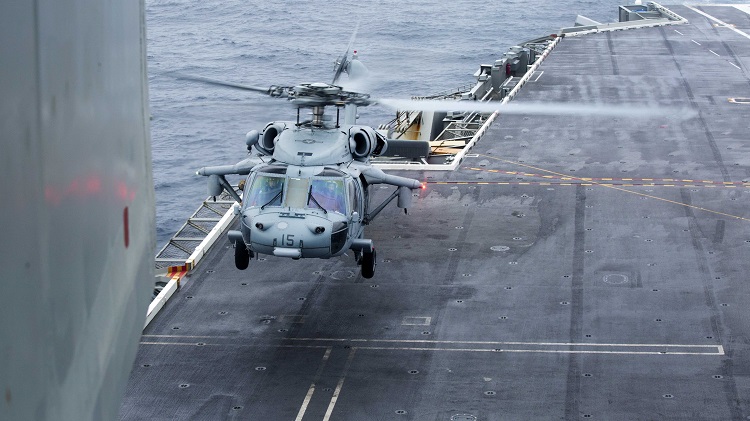Tens of Thousands of Homes Damaged by Florence
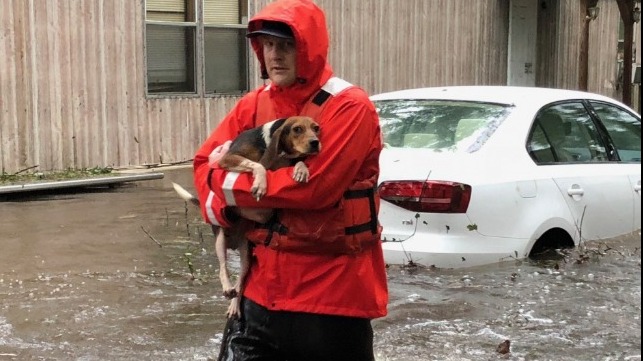
Hurricane Florence has left at least 15 dead and tens of thousands of homes damaged across North and South Carolina after making landfall on Friday.
Florence had weakened to a tropical depression by Sunday, but is forecast to bring up to 10 inches (25 cm) of rain in North Carolina, in addition to the 20 inches already received in some areas.
More than 900 people were rescued from rising floodwaters.
Port Condition Zulu remains in effect for the ports of Wilmington, Morehead City, and Georgetown, South Carolina. In Port Condition Zulu the port is closed, and all port operations are suspended. Seven buoy-tending cutters have been directed to North Carolina to survey and open the ports of Wilmington and Morehead City as well as the North Carolina ferry system.
The ports of Charleston, South Carolina, and Hampton Roads, Virginia, have been reopened, but mariners are encouraged to use extreme caution.
Coast Guard Aids to Navigation Team Charleston assesses post-hurricane harbor conditions in Horry County.
Currently there are more than 3,000 U.S. Coast Guard members responding to Hurricane Florence. Coast Guard crews from across the Coast Guard have rescued 193 people and 91 pets in North Carolina since Hurricane Florence began. Coast Guard helicopter crews from across the Coast Guard have rescued 133 people and 20 pets, and Coast Guard shallow water response team from across the Coast Guard have rescued 60 people and 71 pets in North Carolina since Hurricane Florence began.
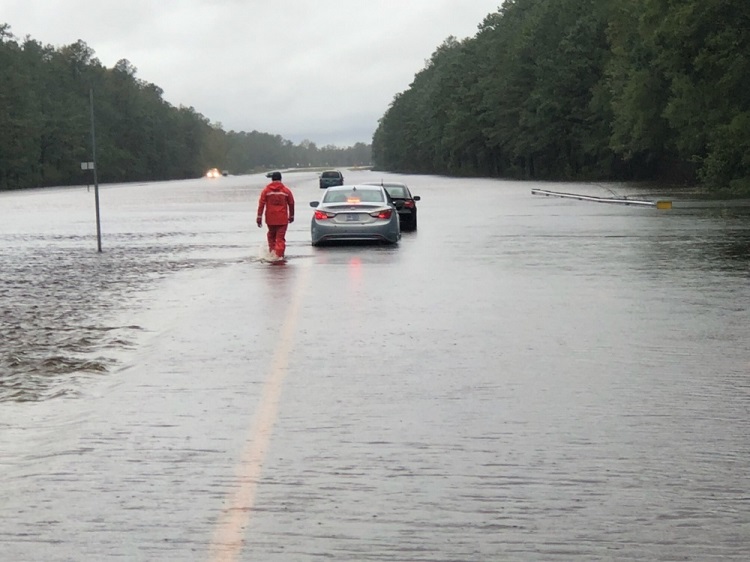
Coast Guard shallow-water response boat team members assist motorists stranded in flood water caused by Hurricane Florence in North Carolina, September 16, 2018.
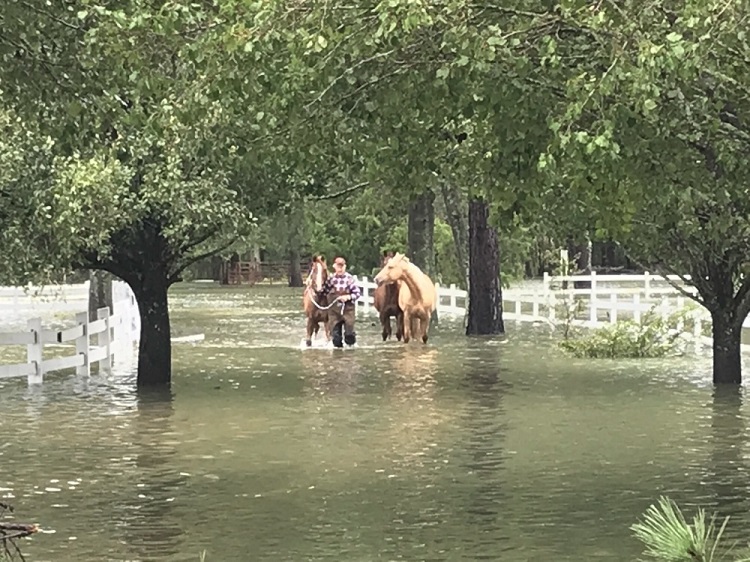
A Lumberton, North Carolina, resident frees horses trapped on his property near Lumberton, North Carolina, after being assisted by Master Chief Petty Officer John Schmerber, a team leader for Coast Guard Vessel Support Team Boston, September 16, 2018.
Coast Guard aviation search and rescue operations in North Carolina during the aftermath of Hurricane Florence, September 16, 2018.
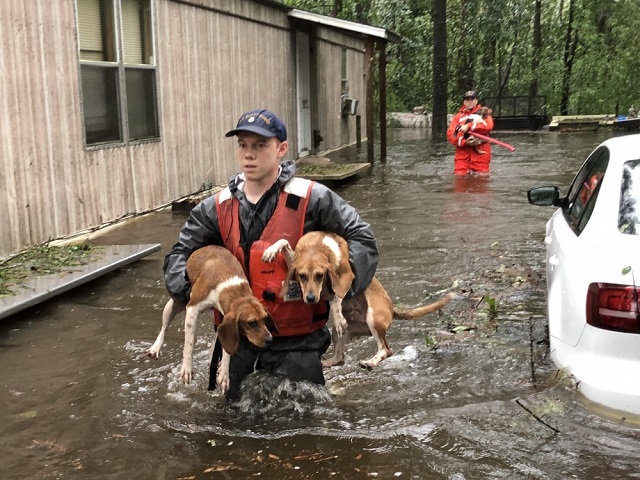
Members of Coast Guard Shallow-Water Response Boat Team 3 help pets stranded by floodwater caused by Hurricane Florence near Riegelwood, North Carolina, September 16, 2018.
An MH-60T Jayhawk helicopter crew from Coast Guard Air Station Elizabeth City, North Carolina, rescues multiple victims from flooding caused by Hurricane Florence in Onslow County, North Carolina September 15, 2018.
An MH-60T Jayhawk helicopter crew from Coast Guard Air Station Elizabeth City, North Carolina, rescues multiple victims from flooding caused by Hurricane Florence in Onslow County, North Carolina September 15, 2018.
The U.S. Navy's Northern Command is actively supporting the Federal Emergency Management Agency (FEMA), state and local partners. Speaking on Saturday, Gen. Terrence J. O'Shaughnessy, North American Aerospace Defense Command and U.S. Northern Command commander, said: "We have quite literally surrounded the affected area with DoD capability that will be critical in hours and days following the storm's impact.”
The Command has identified nine military installations as FEMA staging areas for equipment and relief supplies including: Fort AP Hill and Fort Lee, Virginia; Fort Bragg and Seymour Johnson Air Force Base, North Carolina; North Auxiliary Airfield and Shaw Air Force Base, South Carolina; Fort Gordon, Georgia; Maxwell Air Force Base, Alabama; and Dover Air Force Base, Delaware.
Air Force Northern has postured approximately 20 helicopters and crews for this effort.
USS Kearsarge (LHD 3) and USS Arlington (LPD 24) will move in as conditions permit. Additionally, preparations are being made by the Commander, Naval Air Forces Atlantic to recall aircraft back to Norfolk and Oceana as soon as possible. The return plan for Norfolk-based aircraft will give priority to rotary wing assets to allow for additional land-based rotary wing support if requested.
MH-60 Sea Hawk helicopters from the "Dusty Dogs" of Helicopter Sea Combat Squadron (HSC) 7, attached to Carrier Strike Group 12 and the Nimitz-class aircraft carrier USS Abraham Lincoln (CVN 72), are recalled to Naval Station Norfolk. (U.S. Navy photo by Mass Communication Specialist 3rd Class Josiah D. Pearce/Released)
The Command has also deployed nearly 280 high-water vehicles to assist with ground search and rescue in the affected areas.
The National Guard has more than 6,500 Soldiers and Airmen on-duty. More than 10 states have mobilized critical support from their National Guard forces through an Emergency Management Assistance Compact to the anticipated impacted areas. In addition to the National Guard, U.S. Northern Command has deployed nearly 3,000 active-duty service members from all branches of the military to provide response support.
The North Carolina National Guard has more than 2,800 personnel on State Active Duty with an additional 1,000 ready to go. The South Carolina National Guard has over 3,200 Soldiers and Airmen on duty, including two search and rescue capable CH-47 Chinook helicopters and two UH-60 Black Hawks from the Pennsylvania National Guard. Patrick Air Force Base authorities deployed 140 reservists, including search-and-rescue crews, to Georgia to assist with disaster relief efforts as requested.
The U.S. Army Corps of Engineers has more than 200 employees working with FEMA and is monitoring dams in Virginia and North Carolina.
DoD’s Defense Logistics Agency has nearly 90 personnel deployed, as well as 170 trailers staged with commodities including 14,000 cases of shelf-stable meals, cots, durable medical equipment kits, infant and toddler kits, bottled water, 107 generators, blankets and nearly 300,000 gallons of fuel (diesel, unleaded and propane).
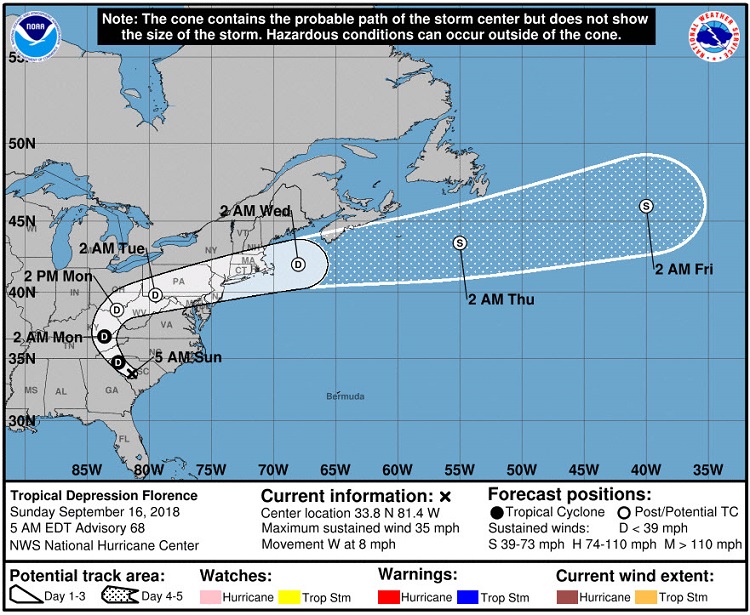
NASA footage of Florence Approaching the Carolinas:

